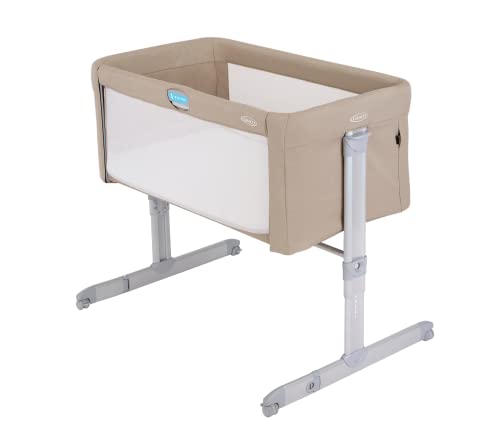How to Choose a Sale Cot
Mortuary Cots are an important element of funeral homes and hospitals. They allow staff to transport bodies safely and respectfully. They also provide a hygienic and comfortable place to rest the body.
COTS items play a critical part in the federal marketplace, but they aren't easy to manage. This blog will provide a detailed explanation of how COTS items are incorporated into GSA schedules, as well as other regulations governing procurement in the government.
Cost-effectiveness
The use of commercial-off-the-shelf (COTS) products allows procurement agencies to gain efficiencies by purchasing items that are readily available from the marketplace. This helps reduce development time as well as life-cycle costs. It also enables procurement agencies to reap the benefits of technological advancements and industry expertise.
It is important to remember that COT definitions can be subjective, and different organizations will interpret COTS items in different ways. This could be a problem for a manufacturer who relies on a consistent methodology to calculate government prices accurately. GPOs and wholesalers, for instance, typically have a list that is not the same as the list used by manufacturers to calculate prices for government. A well-documented SOP and a COTS Reference Library are vital elements to implement an efficient and consistent method of assigning COTs.
Reliability
A sale cot is a vital purchase for mortuary services. It should be reliable and durable enough to stand up to the rigors of heavy use. It should be simple to transport and installed. If there are any issues after purchase the manufacturer should provide an excellent customer service. Also, get feedback from your employees prior to making the final decision. They will be the actual users of the cots and can give you an idea of the durability and reliability of the cots.
Wholesalers and GPOs typically assign COT codes that do not match the manufacturer that supplies the list of COTs. This is a result of many factors, including changing business models, mergers, and acquisitions. This poses challenges to the application of a subjective lens to the classification of COTS.
browse around here of sale cots is important as they must be able to stand up to heavy usage and frequent transport. Many funeral homes use these cots to display the body remains, and they have to be able to withstand the weight of the casket and other items placed on the top. Cots should also be resistant against corrosion and have an easy-to-assemble, stable structure. It is essential to select a business that offers customer service and can help with any issues that could occur after purchasing.

Solid wood cots make the ideal furniture for babies because they are sturdy and less likely to be contaminated with toxic chemicals or off-gassing than composite materials like MDF or Chipboard. They also look more appealing than less expensive alternatives.
If you're seeking a cot that can also be used as a lounge chair then the Westport model from Silver Cross might be the ideal option for you. The cot is constructed of a sturdy material, and is available in three different levels of height for infants who are growing. The instructions are a bit complicated however once you've gotten it figured out the cot will serve your family well.
The Helinox Cot One is the most lightweight cot we tested but it's not as durable as the other models we've test. It also has lots of parts and therefore takes longer to assemble than other cots. It's a very comfortable cot and a good option for backpackers. It weighs 14 ounces less than the Thermarest Luxury Lite or Sleep Rite.
Safety
If you supply cots, you must ensure that they comply with the safety standards. This is a crucial step to prevent injuries to children and even death. This can be accomplished by asking your supplier whether their products have been tested independently. Request them to provide you with a copy of the results. You can also conduct your own tests.
Whether you're buying new or used, it's important to check your cot is safe before you let your baby sleep in it. It is also important to look for warnings and labels that give information, and a certificate from the manufacturer. It must also be free of any sharp edges, protrusions, or gaps that could entrap the child's leg or finger. There should be no footholds a child could use to get out of the cot.
When selecting a cot, ensure that the mattress is clean and flat. It should be able to fit comfortably without gaps. The bottom edge of the rail should not be more than 30 millimetres from the mattress base. If the base of the cot is adjustable, ensure that it is set to its lowest position.
In addition, ensure that the slats and filler bars are properly fixed and don't have any small holes that could catch clothing. Bolts, nuts, and corner posts must not be more than 5mm from the ground to prevent children from getting their fingers caught. Also, make sure that the crib is free of loose blinds and curtains that could be snatched by tiny hands.
Lastly, look for a label showing that the cot has been tested according to the mandatory standards and complies with Australian Standards AS/NZS 2172:2003 Cots for safety requirements for use in the home. This is the only assurance that the cot is safe and suitable for sleep. It's illegal for antique stores and second-hand shops to sell antique cots which don't come with certificates and labels.
Accidents can occur, despite the fact that the majority of designers and manufacturers do their best to ensure that their products are safe. Older cots used by children of other ages may not meet current safety standards, and they can present risks of suffocation or strangulation or ingestion of foreign bodies.
